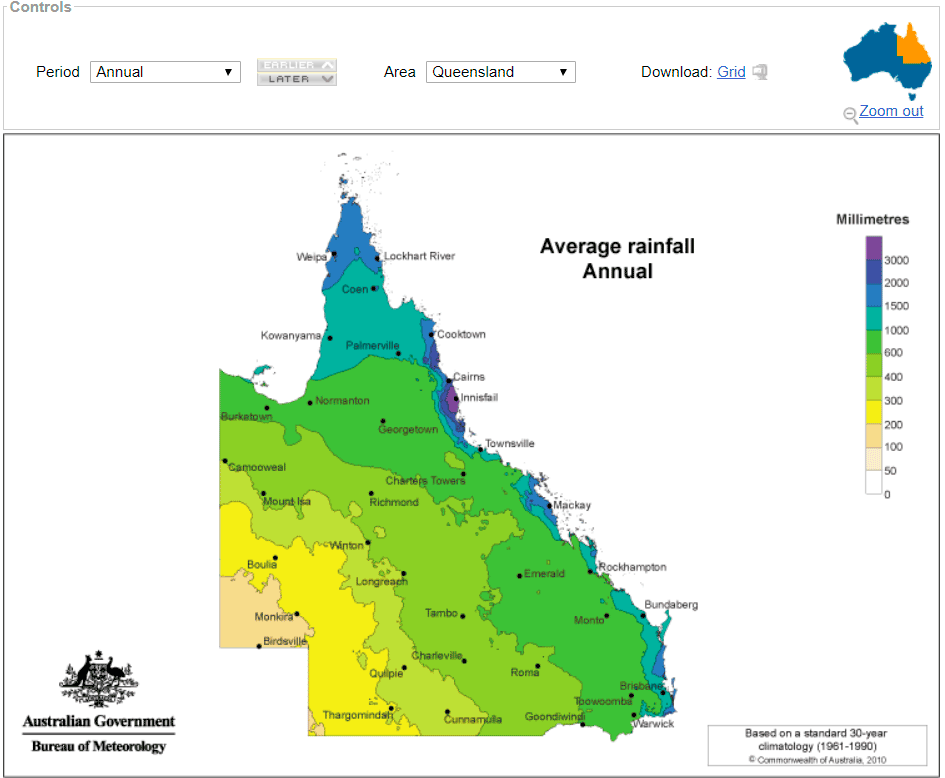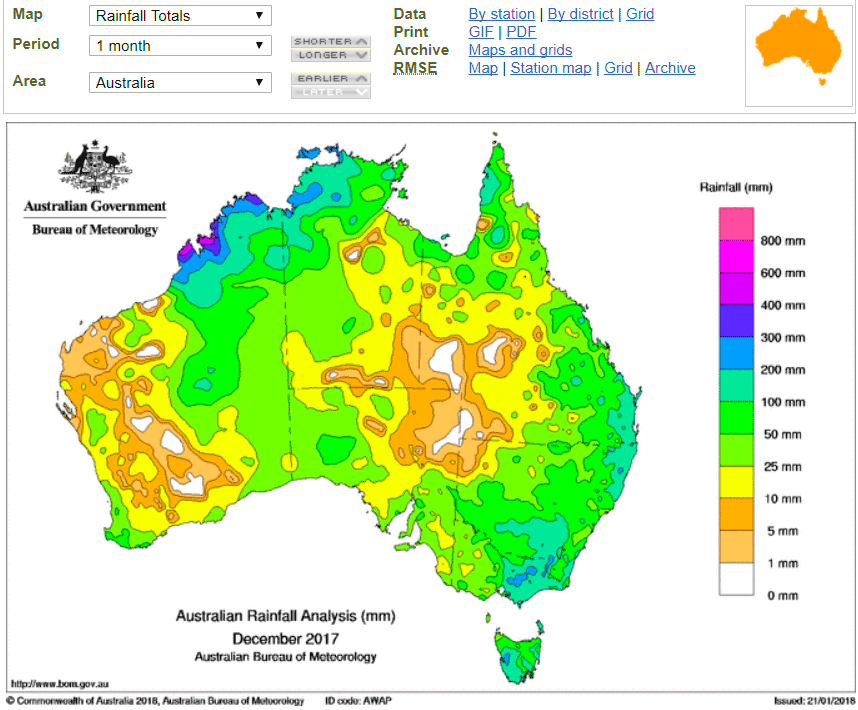Water Tank Buying Guide
Discover How Much Rain Falls On Your Property
When purchasing rainwater tank, it is helpful to know how much rain falls in your area since such can influence the size of water tank you purchase. That said, if you have a reasonable roof harvesting area, and live in a coastal area of Australia, then you shouldn’t have too much problem filling up even a large 5000 gallon (22,700L) tank.
Nonetheless, figuring out how much rainwater falls on your property can be an interesting exercise. If you live in Australia, figuring out your rainfall is made relatively easy thanks to the Bureau of Meteorology (BoM) website which records how much rain falls across Australia.
Using BoM’s Website to Determine Rainfall
BoM monitors and collects regional information on rainfall, making such information publicly accessible via their website. To figure out how much rain will likely fall on your property throughout the year, visit BoM’s Average annual, seasonal and monthly rainfall web page.
Once there, select:
- “Period” – you can select any month, season or annual rainfall.
- “Area” – your state.
A map of your state will be displayed in different colours which represent the average rainfall in an area for your selected period. This data is based upon a standard 30-year climatology (1961–1990), which is adequate for gauging rainfall in your area.
Recent Monthly Rainfall Totals
While the above annual average is good, if you want more specific rainfall information then you also can discover daily rainfall totals in your area on BoM’s website. There you can also discover how much rain has fallen in your area in recent months. Once on the page select:
- “Map” – Rainfall Totals (for rainfall in millimetres)
- “Period” – select “1 month” and you will be click an “Earlier” button to see the rainfall over previous recent months.
- “Area” – your state.
Rain Doesn’t Fall Evenly Over Time
It is important to note that rain doesn’t fall evenly throughout the year. Summer is often understood to be the storm season, and it is the season that yields the most rain in Australia. This is because heat evaporates more water from lakes, rivers and oceans, that then condenses in the atmosphere and falls back down to earth as rain.
At the opposite end, winter is generally the driest season. If you’re looking to harvest rain, it is important to try have everything setup prior to the hotter months of the year. Spring and summer are often the busier seasons for water tanks, but you could get in ahead during winter months.
Finally, when rain does fall during a month, it won’t fall evenly over each day. Especially in the weeks of summer, it will pour down for several days one week, and then the sky will close for fortnight or so. If you would find it disheartening seeing rainwater flow into your stormwater drain, then you may want to invest in a larger tank or even a second tank. Even very large tanks may end up overflowing when it rains, although having a larger capacity tank will mean less rainwater down your drain and more you can use during the dryer period which follows.
Hopefully this article has helped you to better understand and calculate rainfall on your property. If it has, please share this article or our website socially and with others who might be interested in water tank. Please leave a comment below to let us know if you liked this article, or if you have any comments or unanswered questions.





